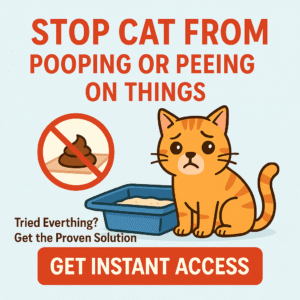If you’ve spent any time in a pet store—or scrolling through cute cat videos—you’ve probably seen creamy cat treats like Churu, Temptations Creamy Purrrr-ée, or similar squeezable snacks. Cats seem to go wild for them, licking the packet clean and begging for more. But are these creamy treats actually good for your cat? Or are they just tasty junk food? This in-depth guide covers what’s in creamy treats, when to use them, and how to keep your cat both happy and healthy.
What Are Creamy Cat Treats?
Creamy treats are soft, squeezable snacks that come in tubes or pouches. Most are high in moisture, smooth in texture, and extremely palatable. They’re designed as an extra-special reward—not a meal replacement. These treats are marketed as hydrating, low-calorie, and ideal for hand-feeding or bonding with your cat.
- Popular brands: Churu, Inaba, Vitakraft, Sheba Meaty Sticks Creamy, Temptations Creamy Purrrr-ée
- Common flavors: Tuna, chicken, salmon, crab, shrimp, beef, and cheese
What’s Inside Creamy Treats?
Most reputable creamy treats contain:
- Water or broth (for moisture and smooth texture)
- Meat/fish ingredients (like tuna, chicken, salmon)
- Thickeners (guar gum, xanthan gum, tapioca starch)
- Vitamins/minerals (sometimes added for extra nutrition)
- Low fat and low calories (typically 5–10 kcal per tube)
High-quality options avoid artificial flavors, excess salt, added sugar, or preservatives. Always check the label for unnecessary fillers or potential allergens.
Are Creamy Treats Healthy for Cats?
Creamy treats can be a healthy addition to your cat’s diet—when used responsibly and in moderation. Here’s why:
- Hydration: Many cats don’t drink enough water. Moisture-rich treats can help increase your cat’s water intake, supporting kidney and urinary tract health.
- Low calorie: Most creamy treats are designed to be guilt-free rewards (5–10 kcal per tube), making them safer for daily use compared to high-calorie crunchy treats.
- High palatability: Creamy treats are great for picky eaters, senior cats, or cats who are sick and need encouragement to eat.
- Bonding and training: The squeeze-and-lick format encourages interactive feeding, strengthens your bond, and can be used to reward or distract during grooming, nail trims, or vet visits.
- Medication aid: Some cats will take pills or supplements more willingly if mixed with a creamy treat.
Potential Downsides and Risks
While creamy treats are generally safe, there are a few things to keep in mind:
- Not a meal replacement: Creamy treats are not nutritionally complete. They should never replace balanced cat food or be your cat’s main calorie source.
- Allergies and sensitivities: Some cats may react to fish, dairy, or certain additives. Always monitor for digestive upset or itching.
- Added sodium: A few brands add extra salt for flavor. For cats with kidney or heart disease, choose low-sodium options.
- Excess calories: Overfeeding treats—creamy or not—can lead to weight gain. Stick to the recommended portion size (usually 1–2 tubes per day, depending on your cat’s weight and diet).
How to Choose the Best Creamy Treats
- Check ingredients: Look for named animal proteins (tuna, chicken, salmon) as the first ingredient. Avoid artificial flavors, colors, and high salt content.
- Single-protein options: For cats with food sensitivities, choose single-protein treats and avoid “mixed” flavors.
- Reputable brands: Stick to well-known brands that publish their ingredient lists and calorie counts.
- Low-calorie, high-moisture: The best treats are low in calories and high in water content—great for hydration and guilt-free spoiling.
How and When to Feed Creamy Treats
Creamy treats are most effective when used as:
- Reward for good behavior: Reinforce positive actions, from using the scratching post to coming when called.
- Distraction: Offer during grooming, medication, or vet visits for a stress-free experience.
- Bonding tool: Hand-feed directly from the tube for a special moment of closeness.
- Stimulating appetite: Entice picky or sick cats to eat by topping food with a small amount of creamy treat.
- Pill pockets: Mix medicine or supplements with creamy treats to mask the taste.
How Much Is Too Much?
Most experts recommend limiting treats—including creamy treats—to no more than 10% of your cat’s daily caloric intake. For an average cat, that’s about 1–2 tubes per day (or as directed by the package and your vet). Balance treats with regular meals to avoid unintentional weight gain.
Frequently Asked Questions
Are creamy treats safe for kittens?
Most brands are safe for kittens over 8–12 weeks, but always check the package and consult your vet. Kittens may benefit from the hydration and soft texture, but should still eat nutritionally complete kitten food.
Can I make homemade creamy treats?
Yes! You can blend plain cooked chicken, tuna, or salmon with water or low-sodium broth to create a cat-safe puree. Avoid adding salt, onion, garlic, or dairy. Homemade treats should be stored in the fridge and used within a couple of days.
Are creamy treats good for cats with dental problems?
Absolutely. Soft, lickable treats are ideal for senior cats or those with dental pain who have trouble chewing dry food or crunchy treats.
Can creamy treats help with hydration?
Yes, especially for cats who don’t drink much water. While not a substitute for fresh water or wet food, creamy treats can supplement hydration.
What if my cat gets diarrhea after creamy treats?
Stop the treats and consult your veterinarian—some cats may be sensitive to certain ingredients or flavors. Try single-protein or hypoallergenic formulas.
Conclusion: Should You Give Creamy Treats to Your Cat?
Creamy treats can be a healthy, hydrating, and highly enjoyable addition to your cat’s routine—when fed in moderation and as part of a balanced diet. Choose quality brands, watch the ingredient list, and use these treats as a reward, bonding tool, or appetite booster. Remember: treats are for fun and enrichment, not for replacing real, complete nutrition. When used thoughtfully, creamy treats can delight your cat and strengthen your relationship, all while supporting their well-being.
